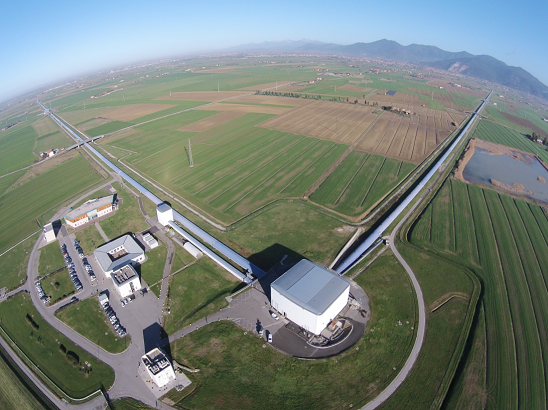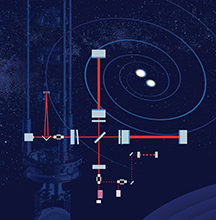Advanced Virgo: How to adapt to the spread of virus
ALMA in Chile, VERITAS in the United States, the Pierre-Auger Observatory in Argentina… Like so many others, these three major research infrastructures dedicated to astronomical observations had to close their doors following measurements related to the propagation of Covid-19. The Virgo gravitational wave detector was no exception to the rule: it is now at a standstill. Raeffele Flaminio, a physicist at the LAPP, has closely followed the spread of the virus and its impact on the operation of the detector: he tells us the story.
“We saw the wave rising…” These are the words used by Raffaele Flaminio on March 20 to describe the spread of the virus and its impact on the projected schedule regarding Virgo’s upgrade for which he is responsible. “The upgrade of the detector to the Advanced Virgo + version requires the production of a lot of parts. But from the first week of March, we saw the effects of the containment on the Italians: the laboratories in Pisa and Perugia were closed. I tried to have the parts manufactured in the Netherlands: the workshop of the NIKHEF laboratory in Amsterdam closed last week. On Friday 13th, after Emmanuel Macron’s announcement, I understood that the deadlines would not be met”. The physicist then informed the Virgo collaboration that Advanced Virgo + would not be ready in May. In the meantime Virgo continues to take data from the American LIGO. In the USA the situation in the following week also deteriorates very quickly.
How to adapt ? Ligo-Virgo employees regularly exchange information via videoconference in order to consult each other. The original plan was that the period of data acquisition by Ligo-Virgo’s detectors would last until the end of this month,” Raffaele explains in mid-April. But we were quickly disillusioned by the way things turned out. The situation in Italy was making it increasingly risky for operators who had to operate on site, with derogatory authorisation, to carry out this data acquisition”. The decision was taken to put the detectors on “stand by”: this has been the case since 31 March. Their lasers are indeed switched off ; however, subsystems are kept on standby, so that Ligo and Virgo can restart under the best conditions when work starts up again in each of the countries concerned.
“Of course, we’re already considering the deconfinement of Italy,” says Raffaele, who keeps up-to-date with news from his home country on a daily basis. “When it will happen, we will do remote tests on Virgo. Making up for a month’s data delay? We’ll have to wait until Ligo gets back up and running. Make progress on the upgrade? “We’ll have to wait until the parts are manufactured…”.
While the future is unclear as to what operations can actually take place when the return to normal is expected, it is impatiently awaited. Indeed, during the eleven months of this last unfinished measurement campaign, more than 56 events potentially attributable to gravitational waves were detected, a record ! And Virgo’s future upgrade should enable it to further increase its sensitivity and multiply the number of detectable events by a factor of four. In the meantime, thanks to the operation of computer centers around the world, scientists continue to analyze their data.
Read more : « “How the coronavirus pandemic is affecting the world’s biggest physics experiments” »



